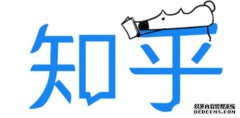精品推荐:西藏狮子银币一组
精品推荐:西藏狮子银币一组
藏族崇狮习俗由来已久,它与佛教文化的传入有着密切关系。比如“狮子吼”即喻示佛陀弘法的无畏广博,又多见于诸神佛的坐骑,如文殊菩萨、多闻天王、丹坚护法等等。
其实,藏地原本没有狮子生活,由于外来文化的交融,使得狮子形象很早就在西藏地区受到重视,与之有关的传说寓言也非常多。在著名寓言《咕咚》中,作为百兽之王的狮子,在动物们奔走相告疑虑惊慌之时,只有它知道“咕咚”是木瓜掉进水里发出的声音,体现了狮王的威武冷静和智慧豁达。通过建筑、雕塑、绘画、舞蹈、藏戏、宗教等多种表现形式,崇狮文化得到了不断的丰富与延续,也成为了西藏人民善良勇敢的象征。
清朝宣统元年(1909),“狮子”作为主要图案,被运用在了一系列钱文设计上。当年制造的几款银币和铜币,自诞生以来也一直是藏币收藏中的焦点,本文主要谈谈其中更为稀少的一两形制银币——狮图“桑冈果木”。
Tibetan lion worship has a long history, which is closely related to the introduction of Buddhist culture. For example, the "lion roar" means that the Buddha is fearless and broad in enlarging Buddha's Dharma, and it is often seen on the mounts of gods and Buddhas, such as Manjusri Bodhisattva, Duowen Heavenly King, Dan's adherence to Dharma and so on.
In fact, there was no lion life in Tibet. Because of the blending of foreign cultures, the image of lion was paid attention to very early in Tibet. There are many legends and fables related to it. In the famous fable Gu Du, the lion, the king of beasts, is the only one who knows that Gu Du is the sound of papaya falling into the water when the animals rush to tell each other their doubts and panic. It reflects the majestic calmness and wisdom of the lion king. Through architecture, sculpture, painting, dance, Tibetan opera, religion and other forms of expression, the lion worship culture has been constantly enriched and continued, and has become a symbol of the goodness and courage of the Tibetan people.
In the first year of Xuantong in the Qing Dynasty (1909), as the main pattern, "lion" was used in a series of money design. Several silver and copper coins manufactured in that year have also been the focus of Tibetan coin collection since their birth. This paper mainly talks about one or two-shaped silver coins, the lion map "Sanggang Fruit Wood".
“桑冈果木”即“一两银元”的藏语发音。狮图“桑冈果木”是西藏地区首次使用机械制造的带有雄狮图案的大型银币,其直径约35毫米,厚约2.2毫米,光边。正面中间圆圈内一头健硕威武的雄狮回首作吼状,似威震一切邪魔歪道,圈外环绕八个等分的莲花瓣轮廓,每个花瓣内都有藏文,顺时针依次排列为“甘、丹、颇、章、却、列、朗、杰”,意为“甘丹圣殿,战胜四方”,表达希望威德远播四方的一种愿景。背面中间为“如意宝”图案,其外环绕手写体藏文纪年15饶迥43年银一两(“饶迥”相当于“甲子”六十年,第一个饶迥始于公元1027年,此处计算后即公元1909年),外围同样环绕八个等分的莲花花瓣轮廓,带有宗教纹饰寓意的八吉祥图案顺时针排列其中,近外廓处和正面一样有点状圆圈环绕,反映出浓郁的藏族风格和传统特色。
"Sanggang Guomu" is the Tibetan pronunciation of "one or two silver dollars". Shitu "Sanggang Fruit Wood" is the first large silver coin with male lion pattern manufactured by machinery in Tibet. Its diameter is about 35 mm, thickness is about 2.2 mm, and smooth edge. A powerful lion in the middle circle of the front looks back and roars like all devils of Megatron, surrounded by eight equal parts of the lotus petals outline, each petal has Tibetan, clockwise arranged as "Gan, Dan, Po, Zhang, Qie, Le, Lang, Jie", meaning "Gandan Temple, defeat the four sides". Wide is expected to broadcast a vision of the Quartet. In the middle of the back is the "Ruyibao" pattern, which is surrounded by the handwritten Tibetan Age of 15 Raocheng 43 years ("Raocheng" corresponds to "Jiazi" 60 years, the first Raocheng began in 1027 AD, which is calculated in 1909 AD). The outline of eight equal lotus petals also surrounds the periphery with religious decorative implications. The eight auspicious patterns are arranged clockwise, with a little circle around the outer outline as the front, reflecting the strong Tibetan style and traditional characteristics.
在清朝“元两之争”的背景下,西藏地区也尝试实行币制改革,并陆续购置造币机器,告别了长期依靠手工打制钱模、剪片等传统制币历史,逐渐步入了以人力、水力为动力的机械化制币阶段。其采用高纯度的纹银为主要原料,熔化后制成银坯饼,以人力驱动机械制造银币。相比之前漫长的打制币历史,工艺技术已有实质提高,但尚处于半机械化制币的过渡阶段,造币工序繁多而产量低下,工作模较多而缺少边齿冲压工艺。因此,尽管此品种制造时间不长,却产生出丰富的版别和细细目。通过大量实物观察和资料对比,按狮图样式可分为两个大类,一类为“大头狮”,狮头硕大鬓毛粗密成回首状,另一类鬓毛较稀,狮头明显偏小,作回首状且微微上仰,故称其“小头狮”。以此两个大类衍生出来的主要版式可归纳出十余种,而实际依然存在局部纹饰、暗记、修模等细细目的变化,可见当时除了带有试造性质的尝试外,模具的损耗也确实比较严重。
Under the background of the "Yuan-Liang Debate" of the Qing Dynasty, Tibet also tried to reform its currency system and gradually purchased coin-making machines, saying goodbye to the long-standing history of traditional coin-making such as hand-made coin moulds and scissors, and gradually entered the stage of mechanized coin-making driven by manpower and water power. It uses high purity grain silver as the main raw material, melts and makes silver cake, and manufactures silver coins by human-driven machinery. Compared with the long history of coinage making before, the technology has been substantially improved, but it is still in the transitional stage of semi-mechanized coinage. There are many coinage processes and low production, and there are many working dies and lack of edge stamping technology. Therefore, although the production time of this variety is not long, it produces rich editions and details. Through a large number of physical observation and data comparison, according to the pattern of the lion, it can be divided into two major categories, one is "big lion", the lion's head is large and hairy with thick back shape, the other is sparse, the lion's head is obviously small, and the lion's head is looked back and slightly upward, so it is called "small lion". The main formats derived from these two categories can be summarized into more than ten kinds, but there are still some detailed changes in local decoration, secret record and die repair. It can be seen that besides the attempt of trial-manufacture, the loss of the die was also quite serious at that time.
- 新闻
- 房产
- 汽车
- 娱乐
- 体育






















